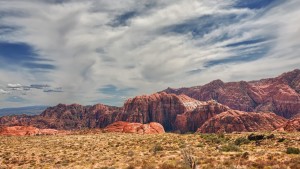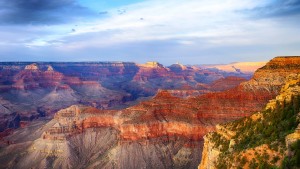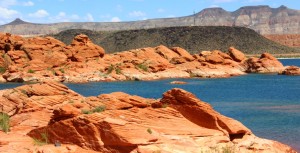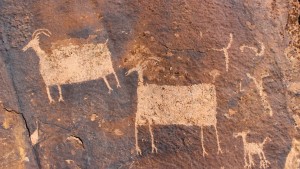
ST. GEORGE — In early December, Sen. Mike Lee asked Senate Majority Leader Mitch McConnell not to permanently renew the Land and Water Conservation Program, citing lack of maintenance funding for lands already purchased by the program. The program expired in September. However, on Dec. 17, Congress voted to renew the program for three years with a $450 million budget for 2016, nearly doubling the 2015 budget.
The Land and Water Conservation Fund was created by legislation passed by Congress in 1964 and signed into law in 1965, including stated goals:
… to assist in preserving, developing, and assuring accessibility to all citizens of the United States of America of present and future generations and visitors who are lawfully present within the boundaries of the United States of America such quality and quantity of outdoor recreation resources as may be available and are necessary and desirable for individual active participation in such recreation and to strengthen the health and vitality of the citizens of the United States by (1) providing funds for and authorizing federal assistance to the States in planning, acquisition, and development of needed land and water areas and facilities and (2) providing funds for the federal acquisition and development of certain lands and other areas.
In addition to Lee’s opposition to the LWCF, Utah Rep. Rob Bishop, chair of the House Committee on Natural Resources, has also publicly stated his opposition to the program.

“Both Republicans and Democrats support the original intent of the Land and Water Conservation Fund, but the program has drifted far from the original intent,” Bishop said. “Under my chairmanship, the status quo will be challenged. Any re-authorization of LWCF will, among other improvements, prioritize local communities as originally intended.”
According to the Department of Agriculture, the program has protected more than 7 million acres. The program is funded primarily by offshore drilling profits and Congress allocates as much as $900 million dollars yearly for purchasing new land. The land is targeted each year by the U.S. Forest Service (which is in charge of the program), the Interior Department, the U.S. Fish and Wildlife Service and the Bureau of Land Management.
“(The fund has) been used in the past, mostly through collaboration with BLM, to acquire funding to purchase private inholdings within the Red Cliffs Desert Reserve,” Bob Sandberg, administrator of the Red Cliffs Desert Reserve, said. “That’s the main connection we have with it. It’s certainly a great benefit in that aspect to help with the acquisition of those privately-held properties in the reserve.”
Sandberg said the Red Cliffs Desert Reserve in Washington County will most likely apply for funding to purchase some of the remaining inholdings within the reserve; but with stiff competition from numerous other land entities, gaining funding can be difficult.
“Whether we’ll compete high enough to be able to get those … there’s pretty stiff competition for those and it is nationwide. If somebody’s looking for acquisition of sage grouse habitat in Montana, they’re going to be competing against us,” Sandberg said. “Southwest willow flycatcher habitat or yellow-billed cuckoo habitat, you name it, there (are) all sorts of proposals that are turned in to convince the powers that be that this is the greatest project. We’re certainly going to go after it; whether we’ll get it is another question.”

The allocation of funding is being hailed as a victory for both conservationists and conservatives opposed to federal land ownership. Conservationists are hailing the funding despite its short-term status in part because the program is set to receive approximately double the funds compared to the 2015 budget, while their foes claim victory because the program is not being funded for the long term.
“I’m disappointed that it wasn’t reauthorized with full funding and permanent renewal,” said Susan Crook, public lands conservation manager for Citizens For Dixie’s Future, a grassroots coalition in Washington County. “I am pleased that it was reauthorized for the three years with the funding it received. I’m encouraged that at least they’ve made it through this omnibus.”
The fund has benefited every single county in Utah, Crook said, along with virtually every state in the nation.
“I would be surprised to find anyplace in the whole U.S. that hasn’t benefited from the land and water conservation fund.”
According to a document from the National Park Service which lists the grants awarded by the land and water conservation fund (grouped by county), Washington County has been awarded 21 grants totaling more than $2.5 million. Parks such as Snow Canyon State Park and Sand Hollow State Park have benefited from the fund. For the 2016 fiscal year, Washington County has two projects recommended for grants from the LWCF: the Santa Clara/Land Hill Area of Critical Environmental Concern and Zion-Orderville Gulch, both of which are sponsored by Utah Rep. Chris Stewart.
The LWCF enjoys bipartisan support within Washington County, a unique circumstance for a federal lands acquisition program.

The temporary renewal of the fund is a good thing, County Commissioner Zachary Renstrom said. He also said he understands the financial concerns of Bishop and supports congressional revamping of the program’s mission.
“I see it on both sides,” Renstrom said. “I’m glad it’s getting renewed because we have things we need to take care of, but I do hope Congress does come back and correct some of the mistakes or some of the things that need to be fixed in it.”
Most people recognize there are lands within Washington County that need protection but outside of the county, Renstrom said, there are those who have concerns about the federal government buying an excessive amount of land.
Lee has stated his opposition to the program is based on several factors. He said that the program has strayed from its original charter and is in need of reform, specifically stating the program spends too much money on purchasing land and not enough on maintaining it. He also said the program was designed specifically to purchase inholdings within federal lands. The senator said the term “inholdings” should be defined so that the program can “focus on its mission.”
Lee’s third and final point of opposition concerns allocation of funding. When the program was initiated, he said, the funding was designated to funnel 60 percent of the money to states and 40 percent to the federal government. Snce a 1976 amendment, the program removed the 60 percent requirement, Lee’s letter said. In the last 10 years, Lee said, the program has averaged only 11 percent in allocations to the states.
Lee’s letter was signed by Sens. James Langford from Oklahoma, Jeff Flake from Arizona and Ted Cruz from Texas.

Despite the opposition from some Republicans, the Land and Water Conservation Fund enjoys bipartisan support at the federal level as well. In mid-April this year, House bill H.R. 1814 entitled, To Permanently Reauthorize the Land and Water Conservation Fund, was proposed, seeking permanent funding for the program. This bill was sponsored by 200 house members, of whom more than two dozen were Republicans. In September of this year, Rep. Patrick Meehan (R-Pennsylvania) sent a letter signed by 30 Republican house members to then-Speaker of the House John Boehner asking him to fund the program before its lapse.
“The LWCF is our nation’s single-most successful conservation program,” Meehan said on his website. “Yet if Congress does not act soon, the fund and its ongoing preservation projects will be in danger. This could lead to the end of conservation projects and destruction of land that can never be undone. Protecting the outdoors is a smart investment. It’s one of those rare issues that can earn support from both sides of the aisle. It’s time for Congress to act to extend the LWCF.”
Sen. Kelly Ayotte, R-New Hampshire, has also affirmed support for the program, saying that the project has benefited New Hampshire in numerous ways.
“This has been a very important program for preserving our outdoor spaces and the beauty of our country — particularly my home state of New Hampshire,” Ayote said on her website. “We have a bipartisan bill — the Burr-Bennet-Ayotte bill — … that would permanently reauthorize LWCF. … We have 60 votes for permanent authorization that people on both sides feel very strongly about.”
Washington County has shown how the fund can be used properly and enjoy widespread support, Renstrom said, even in a county that normally is averse to federal land acquisition.
“I think for our county it has been a positive thing,” Renstrom said. “I think as a county we have been able to identify sensitive lands. We’ve worked with land owners. We have willing sellers. I think our county is an example of how this should be handled. I think we’re kind of a model for the fund.”
Resources:
- Sen. Mike Lee Press Release
- Department of Interior 2016 budget request
- U.S. Forest Service LWCF info page
- Bipartisan letter to John Boehner
- Sen. Ayotte’s press release
- Rep. Patrick Meehan’s press release
- National Park Service list of Washington County LWCF projects
Email: [email protected]
Twitter: @STGnews
Copyright St. George News, SaintGeorgeUtah.com LLC, 2015, all rights reserved.